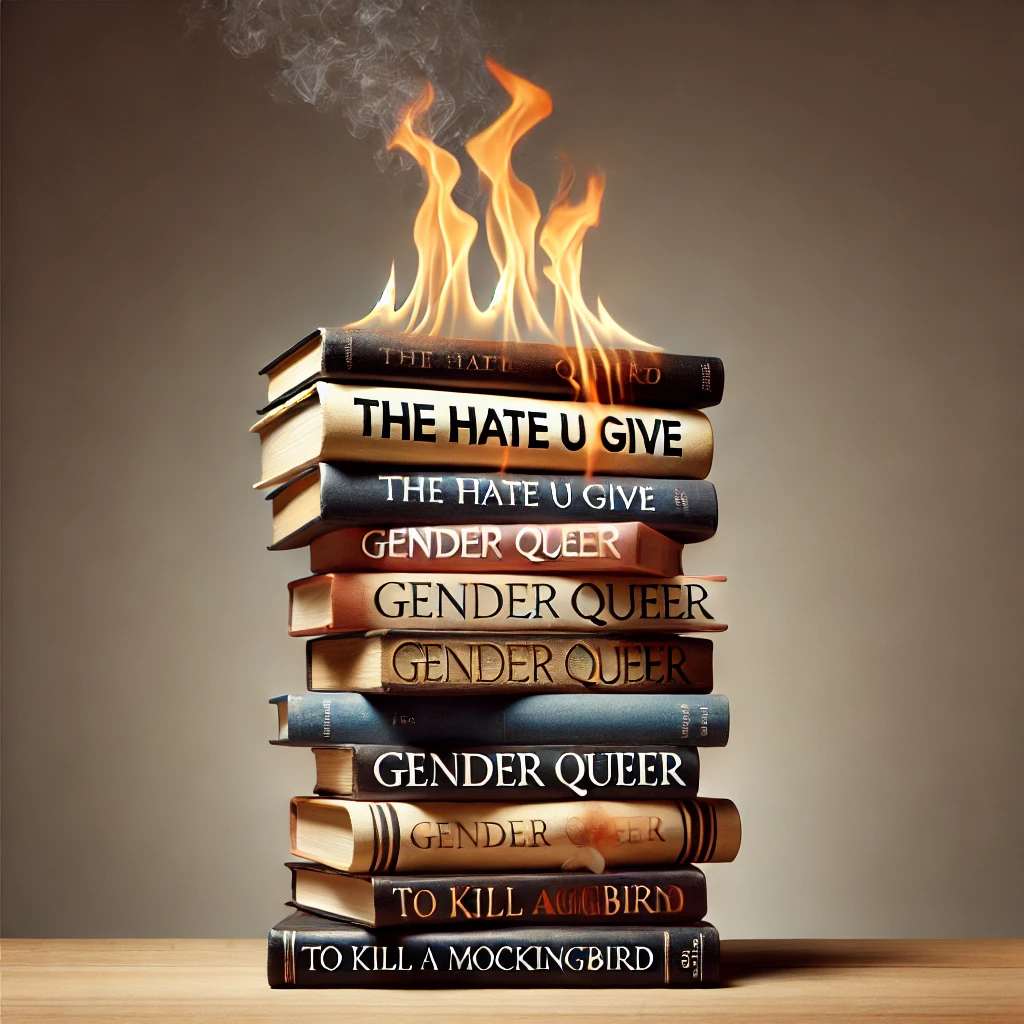Public School Book Bans Report and Surge.
If you’ve been following the news lately, you’ve probably heard about the growing number of books being banned in public schools. It’s a hot topic, sparking passionate debates in communities across the country. Book bans are just one of the many contentious topics shaping U.S. public school policies today.
Recent data from PEN America’s latest report on book bans shows just how widespread this issue has become. Why are so many books being removed from classrooms and libraries? What kinds of books are being targeted? And what does it all mean for students and teachers? Let’s break it down and explore what’s happening, why it’s happening, and why it matters.
To optimize this section for SEO while maintaining clarity and engagement, I’ll integrate relevant keywords naturally and ensure it appeals to both search engines and readers. Here’s the revised version:
What’s Driving the Increase in Book Bans in Public Schools?
The alarming rise in school book bans in 2024 is fueled by a mix of legislative changes, cultural debates, and parental concerns. Here are the key factors:
State Laws Limiting Educational Content
U.S., states like Florida and Texas have introduced laws restricting books that discuss topics like race, LGBTQ+ issues, or gender identity. These laws claim to protect children from “inappropriate” content, yet often result in sweeping bans on educational and inclusive materials.
Parent and Community Challenges
Grassroots movements by parent groups have gained momentum, targeting books they perceive as promoting ideologies they disagree with. Such challenges often lead to school districts removing titles without thorough review processes.
Focus on “Controversial” Themes
Books addressing systemic racism, gender identity, and sexual education are frequently mislabeled as unsuitable for students. Examples include titles like Gender Queer and The Bluest Eye, which face criticism despite being lauded for their literary and educational value.
Political Polarization Fuels Book Bans
Book bans have become symbolic in larger cultural and political battles. Politicians and advocacy groups use the issue to rally support, amplifying the rate at which books are removed from classrooms and libraries.
Impact of Content Labeling Policies
Misinterpretation of content-labeling policies has disproportionately affected works by authors from marginalized communities. These books, which often provide vital perspectives, are being removed under claims of “obscenity” or “indoctrination”.
The ongoing wave of book bans threatens students’ access to diverse ideas and materials. This surge highlights the broader cultural struggle over educational content, freedom of speech, and representation in schools.
The Books Under Fire
1. “Gender Queer” by Maia Kobabe
This book is one of the most frequently challenged and banned works in recent years due to its depiction of LGBTQ+ themes and illustrations related to identity and gender exploration.
Source: PEN America’s annual reports, which highlight books most commonly targeted by bans.
Frequently banned for addressing themes of racism, police brutality, and systemic injustice. Some argue it’s “anti-police,” while others highlight its educational value in discussing race and activism.
Source: Reports on challenged books from the American Library Association (ALA), particularly its Top 10 Most Challenged Books lists.
3. Classics like “To Kill a Mockingbird” and “Of Mice and Men”
These works have faced bans for decades, primarily for their use of racial slurs and depictions of racism or outdated stereotypes.
Source: ALA’s Banned Books Week Resources and media coverage of ongoing challenges to these books in U.S. schools.
The problem is banning these books often means students miss out on hearing voices and perspectives they might not encounter otherwise.
How Does Book Bans Affect Schools and Students?
Book bans aren’t just about taking a book off a shelf—they have ripple effects that can change the way schools work and what kids learn.
Shrinking Worldviews: Books help kids see the world from someone else’s perspective. When certain stories are off-limits, students lose out on that chance.
Fear in the Classroom: Many teachers and librarians are now afraid of picking the “wrong” book, leading to self-censorship. They’re avoiding anything that might cause controversy—even if it could really benefit students.
Dividing Communities: These debates are often about bigger issues, like politics and culture, which can make schools feel more divided than ever.
At the heart of it all is a tough question: how do we balance protecting kids with giving them the tools they need to grow, learn, and think for themselves? Like grading systems, standards and policies in U.S. public schools play a significant role in shaping students’ learning environments.
What Can We Do About It?
The rise in book bans can feel overwhelming, but there are ways to address it. It’s about working together to find solutions that help everyone. Here are three simple steps schools and communities can take:
Have Honest Conversations
Talking things out is the first step. Parents, teachers, and students need to share their concerns openly. When people feel heard, it’s easier to find solutions.
The American Library Association (ALA) says forums for discussion can reduce conflicts. These talks can help communities understand each other better.
Teach Media Literacy
Instead of banning books, schools can teach kids how to think critically. Media literacy helps students understand tough topics and different viewpoints.
The International Society for Technology in Education (ISTE) says media literacy builds confidence in tackling challenging ideas.
A 2022 study in Educational Leadership found that students who learned media literacy could better analyze sensitive content.
Create Clear Rules
Schools need clear rules for how books are chosen or removed. When the process is fair and open, it builds trust.
PEN America found that clear policies lead to fewer conflicts about books.
A 2023 study by the National Coalition Against Censorship (NCAC) showed that most book challenges were resolved peacefully in schools with set guidelines.
By talking, teaching, and setting clear rules, we can make schools a place for learning and understanding. Books should challenge us, teach us, and inspire us—not divide us.
The rise in book bans is a complex issue, and there’s no one-size-fits-all solution. But one thing is clear: what we choose to read—and what we allow our kids to read—matters. Books have the power to challenge us, inspire us, and connect us.
As these debates continue, it’s up to all of us to make sure students have the chance to explore diverse ideas and stories. After all, isn’t that what learning is all about?
For more insights into how education systems in the U.S. function, check out our guide on grading scales.
FAQs on Public School Book Bans Report
How many have been banned in public schools in 2024?
As of 2024, nearly 2,000 instances of book bans have been reported in public schools, a sharp increase compared to previous years. This reflects growing debates around controversial topics, particularly books dealing with race, gender identity, and LGBTQ+ themes.
gTip: Stay informed by checking reports from organizations like PEN America for the latest data.
Why are school books banned?
Books are frequently banned due to their content being labeled as inappropriate, controversial, or politically sensitive. Common reasons include depictions of race, racism, gender identity, sexuality, or criticism of historical events. Trusted reports from PEN America and the American Library Association (ALA) highlight how terms like “pornography” are often used to justify bans, even for books that focus on educational and social issues.
Insight: Many bans stem from organized efforts by advocacy groups, highlighting a shift from individual objections to collective campaigns.
How many states have banned books this school year?
As of 2024, book bans have occurred in 41 states, impacting 247 school districts, according to PEN America’s thorough analysis. States like Florida and Texas are leading in the number of incidents
Tip: Explore local news and education boards for state-specific updates.
What is the new index of school book band?
The Index of School Book Bans by PEN America is a comprehensive resource that tracks book bans across the U.S. in detail. It lists banned books, the reasons provided, and the regions affected. The 2023–2024 index is expected to release its finalized figures soon.
Tip: Use this index to advocate for intellectual freedom in your community by raising awareness about banned books.
Are book bans reshaping American public education?
Yes, they are significantly reshaping education by limiting access to diverse perspectives. Trusted sources, including PEN America and the ALA, warn that such bans can narrow students’ exposure to complex issues and stifle critical thinking. They also note the chilling effect on educators, leading to self-censorship in classrooms.
Insight: Parents and students can play a role in shaping school policies by joining library boards or participating in local discussions about curriculum choices.
Where can I find a list of school book bans?
You can find comprehensive lists of banned books on websites like PEN America or the American Library Association (ALA). They provide regularly updated databases with details about each ban, including the book title, location, and reason.
Tip: Use these lists to start conversations about the importance of diverse literature in schools.

Nawab, an educator with a decade of K-12 teaching, holds a graduate degree and a diploma in elementary education. He has also been blogging for four years, sharing insights for educators and parents.
